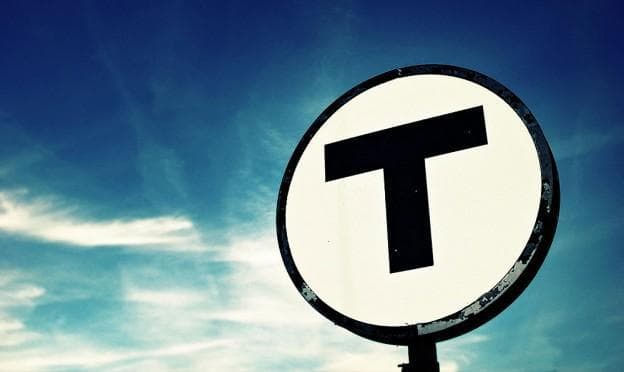Advertisement
Weighing What The T Should Do

The MBTA's budgetary woes are well-known. And thousands of riders have turned out at public meetings to voice concerns with the T's proposals to deal with those budget woes.
But the MBTA's outlined proposals just seek to close the upcoming fiscal year's deficit — projected at $161 million. As Transportation Secretary Richard Davey made clear on Radio Boston Tuesday, deeper budget pain likely looms in subsequent years. There are big, structural issues at hand.
What can be done? It's a topic we've covered before, but it's clearly very important to area residents and Greater Boston at large. So, to continue helping inform the public debate, we asked a couple of transit experts to weigh in with their thoughts. Their responses are published in full below. And, of course, leave your own thoughts and ideas in the comments section.
- Yonah Freemark, author of the transportation policy blog the Transport Politic:
The MBTA finds itself in a predicament facing public transportation agencies across the country: Even as a record number of riders take advantage of the system's bus and rail lines, declining revenues and increasing operations costs are forcing the agency to consider draconian cuts in service and dramatic increases in fares.
The scenarios the MBTA has presented to the public thus far revolve around two possibilities: raising fares by 43 percent (with a 10.6 percent service cut), or reducing service by 24 percent through the elimination of dozens of bus routes (with a 35 percent fare increase). If one approach has to be chosen, it should be the first, since it would reduce ridership by only (!) around 10 percent, versus the roughly 15 percent drop in users a massive service cut would produce.
Neither solution, however, will do either riders or the general Boston public much good, as each would increase the costs and travel times associated with using transit, even as unemployment and poverty continue to strike at the heart of our community, and environmental and congestion concerns suggest that more people should take transit, not fewer.
The best solution would be an immediate injection of state funds into the agency, allowing it to continue providing the essential services that carry 1.2 million riders every day in the metropolitan region. The public must exert pressure on politicians that control the state's purse — not the MBTA, which would love not to lose any riders — to provide this aid and a long-term promise of further support.
If that fails, the MBTA must find a more equitable way to deal with its revenue shortfalls. Certainly regular fare increases, indexed to inflation, should be part of the equation, but not the huge low-income family budget-breaking proposals it currently has on offer. The MBTA Advisory Committee presented a proposal that provided for a much smaller fare increase (about 25 percent) in addition to ramped-up aid from other local bodies, like Massport and the universities.
Meanwhile, the MBTA should continue making an effort to improve efficiencies in its system by selling unproductive land to developers and combining duplicative routes, though it should not reduce service to suburban locals or heavily trafficked urban areas. It should work with cities and neighborhood groups to install transit priority signaling at intersections, introduce off-board payments, and reduce the number of bus stops, all of which would speed up buses and reduce operations costs. And it should negotiate with union representatives to reassign employees away from unproductive jobs, such as the extra conductor on the Red Line — a relic unnecessary according to international standards — and place them in work opportunities that most benefit customers.
- Joseph Giglio, Northeastern U. College of Business Administration professor:
A major question a transportation finance strategy must address is whether each mode — like highways or transit — should be self-supporting, or if cross-subsidies are a better way to achieve overall goals. A robust transit system can take vehicles off the road, reducing congestion and pollution. In New York, for example, two-thirds of the revenue generated by the Metropolitan Transit Authority’s bridges and tunnels is used to provide the transit system with much-needed operating revenue.
With effective cross-subsidies in place, integrated network management can maximize the value the total transportation network delivers to customers. It’s how successful multi-market, multi-product enterprises operate.
Let’s not forget that knowing what customers want is the first step in developing a strategy. It’s also a prerequisite for knowing how to effectively use cross-subsidies.
Finance is about more than just money. How much we have obviously determines what we can build and how well we manage existing assets, but how we raise money also affects what we do and how well we do it.
There must be a fundamental linkage between price and service quality. The same transponder used to pay tolls can be the means of paying for parking at Logan Airport or MBTA commuter rail stations. Enhanced customer convenience may well translate into additional revenue and improved operating efficiencies. The time is long past for the commonwealth to learn how to price the transportation network rather than just individual modes.
This program aired on February 23, 2012. The audio for this program is not available.
